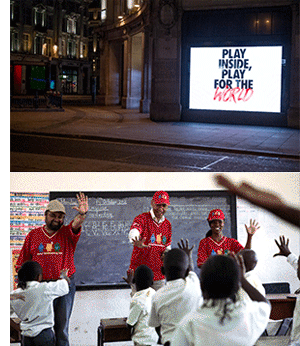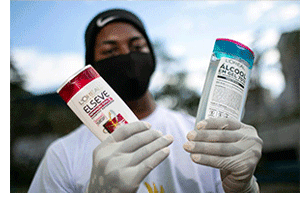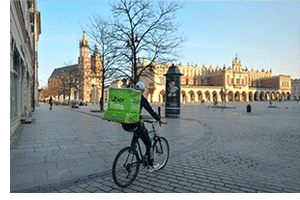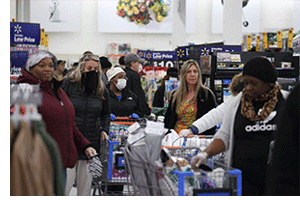Could a Crisis Open Up a Brand Repositioning Door?
Scott Davis, Contributor, CMO Network
Expert on Building Relentlessly Relevant Brands, Transforming Businesses and, Ideally, Moving Society Forward.
Mr. Davis is the chief growth officer and senior partner at Prophet, helping global clients succeed. He’s written numerous articles and several well-received books about Marketing and Branding. Scroll down for more.

s we  .all absorb the constant swirl of changes due to the COVID-19 pandemic, it’s still impossible to say there’s a “right” way for companies to act. Never before have brands been put in such an accelerated crisis, having to rethink their entire messaging strategy, voice and even their purpose in the world.
.all absorb the constant swirl of changes due to the COVID-19 pandemic, it’s still impossible to say there’s a “right” way for companies to act. Never before have brands been put in such an accelerated crisis, having to rethink their entire messaging strategy, voice and even their purpose in the world.
People want to know what brands have to say, but with messages coming out at a rapid-fire pace, it’s important to focus on what brands are doing–something much harder to pull off. People are wondering whether they can continue to trust companies on the other side of this crisis. For some brands, that means they have a truly opportune moment-in-time to reposition themselves to drive even greater relevancy and sustainable, uncommon growth.
It’s too soon to say how the remaining months of social distancing, surging unemployment and inevitable cabin fever will reshape the consumer landscape. But we already see three clear brand “best practices” emerging and one big question every brand has to address. Let’s start with the best practices:
STAY TRUE TO YOUR PURPOSE
While companies making bold moves may be in the minority, I’m awed by the overall agility, responsiveness and guts of a few. For many of these brands, having a strong purpose and knowledge of why they exist in the world, has made their on-ramp into this crisis fairly seamless.
For USAA, one of the most purpose-led brands in the world, it was natural that they would credit their members – many of whom also are working on the front lines of the crisis – with over $500 million in discounts. As Tony Wells, SVP of Marketing at USAA recently commented, “Serving our mission and members is all that matters. Do that well and everything else will fall in place. We serve the best customers in the world.”
 Nike has stayed true to its overall purpose of using the power of sport to bring innovation and inspiration to every athlete in the world. To witness, Nike is leveraging their extensive digital ecosystem to provide “the athlete within us all” with the tools, motivation and affirmation to help fuel physical and mental health, on their own, at home.
Nike has stayed true to its overall purpose of using the power of sport to bring innovation and inspiration to every athlete in the world. To witness, Nike is leveraging their extensive digital ecosystem to provide “the athlete within us all” with the tools, motivation and affirmation to help fuel physical and mental health, on their own, at home.
Unilever remains on-purpose in being a force for good in the world with its May 12 “Day of Service,” which will have its entire U.S. business donate “every essential item” produced that day at its 14 U.S. factories. It’s also devoting the day’s marketing and advertising efforts, resources and talent to support nonprofits.
Importantly, all of these companies and more are consistently (and appropriately) thanking the early responders, front-liners, the overall healthcare community as well as their internal employee teams in personal and inspiring ways…all very purpose based.
DO WHAT YOU SAY, SAY WHAT YOUR ARE DOING
The experiences and actions that companies of all sizes, across categories, are taking are truly inspiring. Take food. Companies like Domino’s, KFC, Chipotle and thousands of local restaurants are donating tens of millions of meals to exhausted healthcare workers and first responders. Others, including Taco Bell and Burger King, are supporting millions of children who can no longer count on meals at school.
 L’Oréal is leading the charge in hand-sanitizer production, while Gap is currently designing masks and gowns as Tesla races into ventilators. Sesame Street remains committed to supporting families through its Caring for Each Other initiative with new content and resources designed to educate, comfort and entertain parents, caregivers and children during these trying times.
L’Oréal is leading the charge in hand-sanitizer production, while Gap is currently designing masks and gowns as Tesla races into ventilators. Sesame Street remains committed to supporting families through its Caring for Each Other initiative with new content and resources designed to educate, comfort and entertain parents, caregivers and children during these trying times.
Some moves are so simple they’re genius: Crocs, already beloved in medical facilities, is donating a pair of free shoes to every healthcare worker in the U.S.
Importantly, deciding what your next set of experience moves will be are as critical as the actions you are currently taking. Deciding if you are going to take on more societal “acts” as part of your brand goes hand in hand with the purpose discussion above and the repositioning question below.
MAKE SURE YOUR BRAND VOICE MEETS THE MOMENT
Smart brands recognize that this is not necessarily the time to continue on with the voice, tone, content, etc. they have worked so hard to articulate for years. Instead, agile brands are meeting the moment with a voice that is more thoughtful, human, relevant and consistent with the times.



 .all absorb the constant swirl of changes due to the COVID-19 pandemic, it’s still impossible to say there’s a “right” way for companies to act. Never before have brands been put in such an accelerated crisis, having to rethink their entire messaging strategy, voice and even their purpose in the world.
.all absorb the constant swirl of changes due to the COVID-19 pandemic, it’s still impossible to say there’s a “right” way for companies to act. Never before have brands been put in such an accelerated crisis, having to rethink their entire messaging strategy, voice and even their purpose in the world. Nike has stayed true to its overall purpose of using the power of sport to bring innovation and inspiration to every athlete in the world. To witness, Nike is leveraging their extensive digital ecosystem to provide “the athlete within us all” with the tools, motivation and affirmation to help fuel physical and mental health, on their own, at home.
Nike has stayed true to its overall purpose of using the power of sport to bring innovation and inspiration to every athlete in the world. To witness, Nike is leveraging their extensive digital ecosystem to provide “the athlete within us all” with the tools, motivation and affirmation to help fuel physical and mental health, on their own, at home. L’Oréal is leading the charge in hand-sanitizer production, while Gap is currently designing masks and gowns as Tesla races into ventilators. Sesame Street remains committed to supporting families through its Caring for Each Other initiative with new content and resources designed to educate, comfort and entertain parents, caregivers and children during these trying times.
L’Oréal is leading the charge in hand-sanitizer production, while Gap is currently designing masks and gowns as Tesla races into ventilators. Sesame Street remains committed to supporting families through its Caring for Each Other initiative with new content and resources designed to educate, comfort and entertain parents, caregivers and children during these trying times.
 A perfect example of this is with the purpose-challenged brand and business, Uber. Uber has definitely risen to the occasion of living its stated intention of “igniting opportunity by settling the world in motion,” by donating 10 million free rides and deliveries for coronavirus relief, while touting its “thank you for not riding with us right now” #stayhome campaign. Is this a moment in time for Uber to pull a page from Lyft and really become a higher order brand or does it go back to the more functional, often controversial brand it has been in the past?
A perfect example of this is with the purpose-challenged brand and business, Uber. Uber has definitely risen to the occasion of living its stated intention of “igniting opportunity by settling the world in motion,” by donating 10 million free rides and deliveries for coronavirus relief, while touting its “thank you for not riding with us right now” #stayhome campaign. Is this a moment in time for Uber to pull a page from Lyft and really become a higher order brand or does it go back to the more functional, often controversial brand it has been in the past? Finally, does United, Marriott, Delta and others force consumer reconsideration, tied to how they are rethinking/reimagining their loyalty programs, with two-year grace periods, for instance, or will they go back to business as usual and get dinged for their “loyalty hostage” mentality in many of those brand studies we all know so well? Will the Walmart brand get a fresh start and no longer play second fiddle to “higher-order” brands, such as Target, Amazon and Trader Joes, tied to their incredible, multi-pronged approach to COVID-19?
Finally, does United, Marriott, Delta and others force consumer reconsideration, tied to how they are rethinking/reimagining their loyalty programs, with two-year grace periods, for instance, or will they go back to business as usual and get dinged for their “loyalty hostage” mentality in many of those brand studies we all know so well? Will the Walmart brand get a fresh start and no longer play second fiddle to “higher-order” brands, such as Target, Amazon and Trader Joes, tied to their incredible, multi-pronged approach to COVID-19?